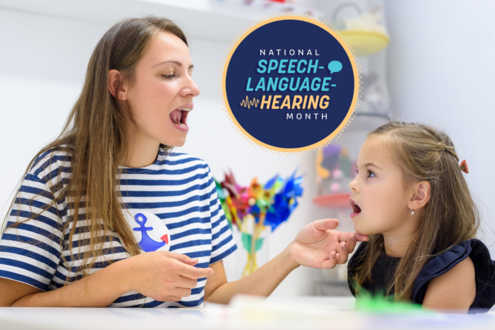
There’s no getting around it. The term orofacial myofunctional disorders (OMD) is a mouthful, which is somewhat appropriate given the source of OMDs is based around the mouth.
Occurring in children, adolescents, and adults, OMDs are caused by abnormal patterns of function and movement of the muscles of the face, tongue, and mouth. OMDs can be caused by a combination of learned behaviors, structural differences, and genetic and environmental factors and can lead to difficulty breathing, swallowing, and speaking. Left untreated, they can impede the proper growth and development of the facial structure and cause complications like dental misalignment.
While the term OMD isn’t familiar to most, they are likely familiar with some common symptoms, including:
- Sleep apnea
- Mouth breathing
- Difficulty swallowing, especially with lips closed
- Periodontal disease
- Speech and articulation issues
- Difficulty breathing through the nose
- Chewing disorders
- Over- and underbites
- Crowded teeth
- Teeth grinding
The causes of OMDs are almost as varied as the potential symptoms. Factors contributing to OMDs include:
- Habitual Behaviors: Prolonged thumb-sucking, pacifier use, or nail-biting can
- Airway Obstructions: Enlarged tonsils, adenoids, or a deviated septum
- Structural Differences: Genetic factors, abnormalities in facial muscle development, and tongue and lip ties
- Environmental and Learned Behaviors: Poor oral habits and delayed development, specifically development related to the effects of nerve impulses on muscles
Treatment for OMDs is highly individualized based on causes and symptoms. In some cases, treatment may involve a team of specialists, including speech-language pathologists, dentists, and potentially surgeons.
The starting treatment is orofacial myofunctional therapy (OMT), which focuses on retraining oral and facial muscles through targeted exercises. Studies show that OMT is 80–90% effective—and long-lasting—when patients follow their treatment plan.
Offered through outpatient rehabilitation departments like the one found at SVMC, OMT involves:
Myofunctional Therapy Exercises: Taught to patients one-on-one by a trained therapist, these exercises work to:
- Strengthen tongue and facial muscles
- Correct resting posture for the tongue (against the hard palate) and lips
- Establish proper swallowing form/pattern
Addressing Root Causes:
- Eliminating habits like thumb-sucking or pacifier use
- Treating airway obstructions through medical interventions if necessary
Interdisciplinary Collaboration:
- Collaboration with orthodontists for dental corrections
- Involvement of speech-language pathologists for speech-related concerns
- Consultation with ENT specialists for airway issues
Parental Involvement in Children’s Therapy:
- Parents play a crucial role in ensuring children practice prescribed exercises consistently at home for best results
As OMDs can significantly impact an individual’s quality of life, early detection and treatment are crucial to long-term success. If you have questions or concerns, call 802-447-5140 and ask for Melissa.
Melissa Morrissey, MS CCC-SLP, is a speech-language pathologist at SVMC Outpatient Rehabilitation, part of Southwestern Vermont Medical Center.